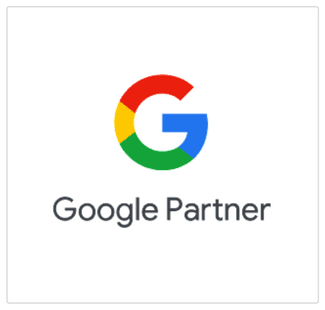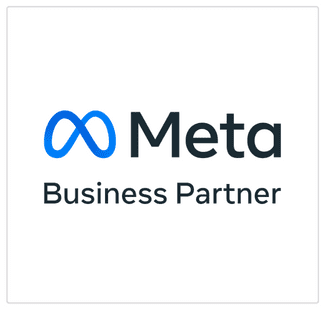Everyone loves a good case study, especially in the SEO industry.
The funny thing is that there are already so many case studies for SEO, but there is still a gap in the content provided. Specifically, there are no case studies that offer truly actionable strategies and actions.
The re7consulting agency is here to provide the market with this information.
What do people want from a case study for SEO services? The main criteria looked for in such a case study are:
- How to increase traffic without scaling content?
- Critical issues to address and how to identify them
- What are the KPIs of the campaign?
- Actions taken, step by step
Before delving into the SEO components listed above, let’s first establish the story behind this case study and the tools used for reporting.
In this case study I will use data from Google Search Console to keep the results presented as clean as possible, without the influence of the various filters configured in Google Analytics.
2016 situation:
The client’s website that obtained the results published in this material recorded a total annual traffic of 8,780 visitors in 2016. Considering that the traffic was too low for his sales goals, he turned to the SEO services of the re7consulting agency.

Our activity started in January 2017, with the goal of doubling the organic traffic recorded by the site in 2016. The first step was to conduct an SEO analysis of the site, necessary to establish the starting point, how the SEO strategy was to be built and the budget needed to meet the objectives.
The research uncovered technical on-page SEO issues, but also the most important aspects for the SEO strategy to be implemented during 2017.
In order to achieve the initial objectives set by the client, we established, together with the client, the monitoring of the site’s performance in Google by measuring the number of clicks, measured in Search Console and Google Analytics, as well as the visibility score, tracked through the SeoMonitor platform.
It is worth mentioning that, in 2016, the measurements were carried out on 200 keywords, which cumulatively generated about 90,000 monthly searches. In 2017, the monitoring of 200 keywords continued.
Another thing noted was that, in 2017, an increase in the number of searches of approximately 5% was observed on the 200 keywords monitored, reaching an average of over 102,000 monthly searches.
2017 situation:
Organic traffic to the site increased 5 times by increasing visibility on targeted keywords and the number of words for which the site was displayed in the top 3 organic results.
After 12 months of SEO campaign, the total organic traffic obtained by the site was over 48,000 visitors, with a monthly average of over 4,000 visitors.
In percentage terms, the organic traffic on the site recorded a 530% increase in 2017, compared to the traffic recorded in 2016.

2018 situation:
The SEO strategy continued in 2018, with the goal of increasing annual traffic by 50% to a total annual traffic of 73,000 visitors. This time too, the results obtained from the SEO strategies implemented far exceeded expectations.
At the end of 2018, the traffic recorded by the client’s website was over 92,000 visitors, a 91.89% increase compared to 2017.

Organic traffic situation in 2016 vs. 2018:
In 2016, the site’s organic traffic was 8,780. In 2018, it reached 92,300, which is a 952.25% increase in traffic from organic results in just 24 months.
Satisfied with the results obtained, the client came up with the proposal that in 2019 – 2020, one of the SEO goals would be to increase the total annual traffic obtained from organic searches to a level close to the total traffic obtained by the site in 2018 from Social Media, i.e. 195,184 visitors.
SEO Plan for 2019:
The SEO plan for 2019 also aims to highlight some aspects that were not emphasized in 2017 and 2018, which required the creation of a company blog to promote information and services or products, through articles relevant to the target audience, as well as the creation of new pages or even improving the existing pages on the site to diversify the range of targeted keywords.
In 2019, more than 12 new pages were created on the website and more than 20 existing pages were improved.
An Inbound Marketing strategy was implemented on the blog with banners directing traffic to the most important pages on the site and internal links based on keywords to improve SEO results.
Forecasts for 2019:
Taking into account the figures obtained in the past and the current evolution of the site, we can make a rough estimate for the total traffic the site will get in 2019 from the organic results displayed by Google.
Our team estimates that the site will reach in 2019 a traffic of about 110 – 120 thousand potential customers from organic results. The next goal is that in 2020, traffic attracted to the site from SEO will reach an annual total of 200,000 visitors.
There are still 5 months of SEO campaign left for 2019, which is why we can’t estimate the final figures 100%, but we promise to come back with an update. Until then, here are some figures showing the percentage increase in monthly organic traffic recorded so far in 2019 compared to 2018.
Organic traffic growth achieved in 2019 vs. 2018:

UPDATE – Situation in 2019
The SEO strategy continued in 2019, focusing on service areas that have not been addressed before, namely Leasing, Rental, Service and Local.
From January 2019 to the end of November 2019, the client’s website attracted 110,000 visitors from organic Google searches.

Thus, the website went from 92,300 organic traffic in 2018 to 110,000, which represents an increase of 17,700 visitors, about 20% more potential customers.
Which means that from 2017 to 2019, the client’s website achieved an organic traffic growth of 1152.84% in 3 years of SEO activity.
The criteria we followed to reach the mentioned figures:
Dealing with an already mature website, with a mature link structure and pages that presented content already optimized on a number of relevant keywords, we had to focus our attention mainly on an optimization strategy with a focus on technical aspects.
- Increase traffic to the site without scaling the content:
One of the quickest ways to increase organic traffic without creating new pages is to optimize the crawl budget. Most of the time, this aspect is framed under Technical SEO. To solve this issue, we have taken into account, among other things, the following aspects:
- Weak (thin) pages:
These pages are URLs on the site that have a low text to html ratio, and the best way to identify them is to use a site crawler, such as SiteBulb or Screaming Frog.
- Query parameters:
These represent those visually unpleasant-looking URLs you often see on e-commerce sites. They usually start with “?=”.
The big problem with these URLs is that they are crawled by Google bots and are considered unique pages, but in reality these pages don’t have enough content or offer enough value to potential customers to be included in the crawl budget.
- Identify critical issues:
The main issue to resolve was filtering out thin pages and pages with different parameters, then removing these pages from the XML sitemap (sitemap.xml) that we submitted to Google.
We also made unique content for the key pages in the site, both at the meta title and meta description level, and at the visible content level, which can actually be read by visitors to the pages.
Next, we scanned the site for pages that could compete for the same words and looked for an optimal optimization option to avoid cannibalizing pages.
Where possible and relevant, we improved the On-Page SEO by implementing internal links on relevant keywords.
Another important aspect to monitor was canonical tags. In this regard, we made sure that there were no pages on the site containing the wrongly configured canonical tag, linking to another URL on the site. If a page is in this situation, it is basically set with the NoIndex directive, making it irrelevant for our SEO campaign.
We have also ensured that all images on the site are displayed on the site directly from the HTML code and are not visible using CSS or JS files.
And at the Local SEO level, we made sure that each contact page for the client’s physical locations had all the necessary information and targeted relevant keywords.
- Campaign KPIs:
Before I get into the KPIs tracked in this SEO campaign, I thought it would be effective to share some cool insights, namely:
- every SEO campaign is different and requires certain elements of customization to report its success.
- a clear goal is total monthly and annual traffic.
- depending on the scale of the project, daily, weekly or monthly results can be analysed. In more detail, conversions from organic traffic can be tracked.
- conversions that can be obtained through SEO: direct sales, lead generation, market visibility, etc. (it all depends on the project).
- another important aspect to monitor is the increase in the volume of monthly searches for branded keywords.
That said, let’s take a look at some of the KPIs tracked from 2017 to date in the optimization campaign.
- I. Volume of monthly impressions on targeted keywords – the main objective was to increase visibility in organic results displayed by Google, boosting the volume of impressions achieved, the main metric to measure results over time.
- II. Number of keywords displayed on the first page.
- III.Organic traffic (brand and non-brand).
- IV. Total number of keywords the site ranks for – we tracked this metric to track the footprints left by the site in Google. The objective here was to improve the Google rankings of the site on the keywords monitored.
- Actions taken, step by step:
In the re7consulting agency things are done a bit differently. We start with an audit in which we look only for those critical elements and super quick wins, we don’t waste dozens of hours doing a comprehensive audit that includes 80% of the changes that will generate only a minimum increase for a maximum amount of effort.
The 80/20 rule is alive and well in SEO.
I. Crawl Analysis:
We started the SEO campaign with a full site crawl conducted with Screaming Frog and SiteBulb, then analyzed:
The redirects in the site to discover any technical issues.
Link Tags: Canonical, NoIndex, NoFollow and Alternate. You’ll be amazed how many times these tags are set incorrectly and something as simple as correcting them opens up the potential for organic traffic attracted from Google.
Header Tags: we mainly looked for pages with no H1 or multiple H1s (which again, happens all the time) and rebuilt the pages on a logical header tag structure.
II. Basic SEO data analysis:
As mentioned before, we started with the on-site part (before moving on to traffic sources, ranking and other aspects), gathering all the findings, and with a manual analysis on:
- XML Sitemap
- Rules used for redirects
- Robots.txt file configuration
- Settings for URL parameters in the site
III. Recommendations for immediate implementation:
Here is our basic differentiator, besides the fact that Stoian Ciprian, our SEO Manager, is able to offer practical experience in solving the main problems that can occur from an SEO point of view on a website, the re7consulting agency also collaborates with many developers specialized in all types of CMS existing on the market.
This is due to the fact that we did not want to be in a position to make specific technical recommendations, but the client could not implement them due to lack of technical resources.
IV. Creation of a KSM – Knowledge SEO Matrix:
We have developed a proprietary way of keyword analysis, based on a significant amount of data, that allows us to provide efficient keyword prioritization.
In addition to monthly search volume and cost per click in Google Ads, our team focuses on search intent for each important keyword, the difficulty of obtaining top positions in the SERP, the required volume of backlinks, the quality of content on the site, bounce rate analysis for the most important pages on the site and the implementation of a Content Marketing strategy to fill the content gaps on each client’s niche.
This KSM matrix also contains a breakdown of all the content we recommend for Implementation, improvement or redirection, based on:
- new keyword opportunities identified in the analysis.
- content gaps identified in the organic results provided by Google.
Also, where necessary, our team also recommends new content to support specific elements of each SEO campaign to increase the overall contextual relevance of the pages.
We hope you found the information in this case study useful.



 Certifications
Certifications 
